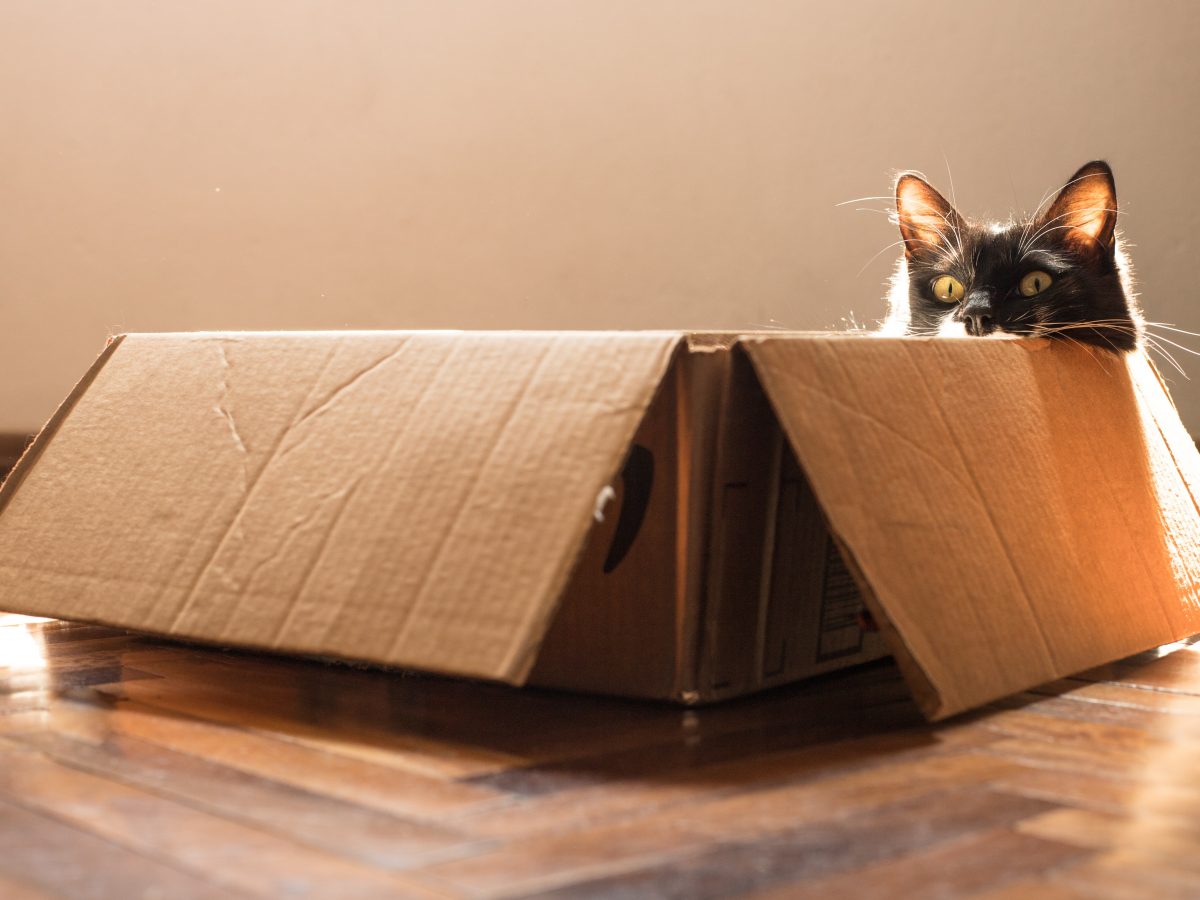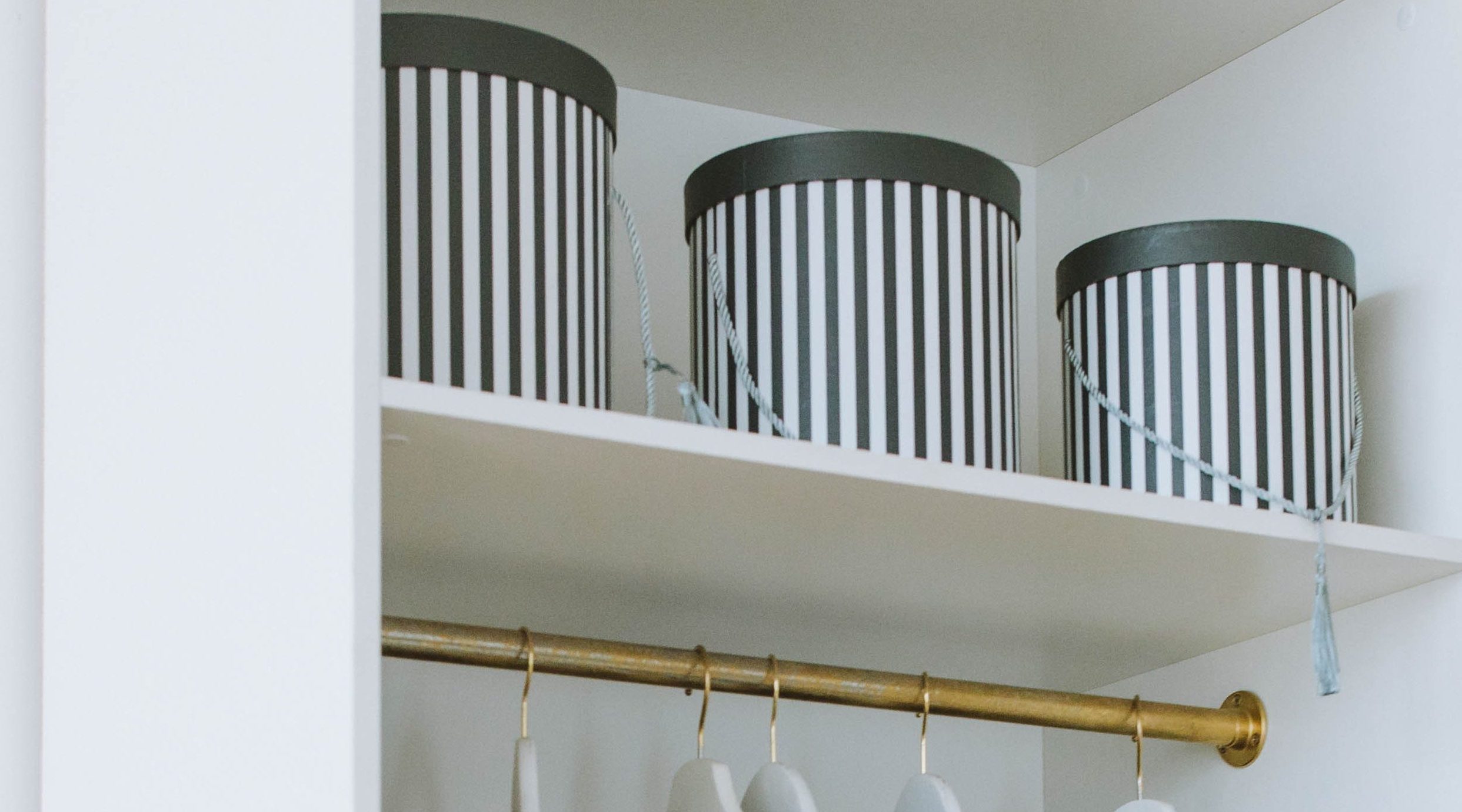Box Up Those Boxes

Cardboard boxes – cats love sitting in them; humans love keeping them “just in case.” Since they are lightweight, ubiquitous, stackable, foldable, and easy to label, cardboard boxes are the frontrunner storage solution for moving. But the truth is, oftentimes, cardboard boxes are left unloaded and end up in hiding. Using them for permanent storage can damage your belongings and affect the air quality in your home. So, what are the long-term issues with cardboard boxes, and what are the solutions? Let’s unpack.
The Issues:

Compared to alternative packing solutions, cardboard is a weak material. With every pack, slide, lift, and stack, the box breaks down more and more. When piled on top of one another, the boxes become less durable, creating more of a chance of the stack falling or ripping.
Heat, humidity, and precipitation can also quickly wear down or damage a box. Boxes stored in attics, garages, and basements are prone to mice or bug infestations. Additionally, concrete slabs and outdoor flooring will seep moisture if not sealed properly. If you store a cardboard box on the ground, it can absorb that moisture and ruin the contents inside with mold and mildew.
The Solution:
Containers made from plastic or glass are not only aesthetically pleasing but are long-lasting, more weather-resistant, and come in clear options so that you can see the contents without ever having to open the top. This feature can be particularly useful if you often forget where you have stored certain items. When you can see the things you have stored away, you are reminded of the joy or service they provide. Taking the time to organize all you have packed up and decluttering or discarding items will surely freshen up your space.

To Clear Things Up:
When left uncared for, your belongings are vulnerable to damage, so it is important to take care of packages and figure out your storage solutions before it’s too late. Depending on how much you have, this task may seem a little daunting. To give you a push in the right direction, we have created a to-do list for you to power through at your leisure. The following list is not meant to be tackled in one day.
Pace yourself and if you start to feel overwhelmed, take a break.
The Schedule:
Take Inventory
Don’t let Aesthetic Instagrammers get to you: you do not need to buy new containers. It might be tempting to run to the nearest Target and pick up some new storage solutions, but you may already have everything you need right at home. Buying containers without having a plan can distract you from progressing forward and overcrowd your living space.
Search around your home for anything you can use to store goods other than cardboard boxes. While clear plastic bins might be a favorite for big items, small items need a home too. Be on the lookout for things that can double as a container.
You may own the proper storage but are not using it effectively. For additional storage, vacuum seal bags, unused luggage/tote bags, and collapsible bins are some examples of storage that may be lying around the house and forgotten about.
Dump and Divide
Start in a contained area. It could be as broad as your kid’s bedroom or as small as the closet in your office – whatever you feel is manageable for you.
Dump everything into a pile to see how much you are dealing with. Set aside any containers you find for later.
Begin organizing the pile into specific categories such as paper, toys, clothes, books, etc.
Temporarily Label

Using a pen and paper, begin labeling the set-aside containers to help visualize where your possessions will go based on size and purpose. For example, you may choose to store blankets in a basket rather than in a tub for easier access, while seasonal shoes can go in a clear bin so you can see where they are when it’s time to bring them out.
Decide and Organize
As you start to put your piles into their containers, look for things to recycle, throw away, or donate and set aside in their own new piles.
Sometimes it can be hard to decide when it’s time to let go of what no longer serves you. If you find yourself in this predicament, fear not. For now, choose to keep it, but also know that this may mean needing more storage bins later on.
Donate, Discard, and Sell
Once you have decided what to do with your belongings, it’s time to get rid of the cardboard boxes! People have a tendency to accumulate extra boxes because of the three S’s:
Shopping (new items coming in)
Shipping (old items going out)
and Storage (items that are here to stay)
After making purchases such as new shoes or devices, you may be tempted to save boxes. In those instances, it’s time to get honest. Often, when people store them for later, they will either sell the item later and including the original box will increase its resale value or because they like the size and durability of the box.
Ask yourself: When was the last time the original box of an item served you? Will you sell the item anytime soon, and if so, could a different container suffice? Will you receive an Amazon package that could replace this box? If your answers do not make you feel good about keeping specific boxes, consider purging.

Some areas have “Buy Nothing” Facebook groups where you can give away or request unwanted items for free, including cardboard boxes!
If you think you will be selling the item soon, believe you will be moving, or simply do not have the resources to store your items differently, it is okay to keep what you have but keep in mind the issues with cardboard boxes in the long run.
Shop
If you are ready to have some long-term storage solutions, check out our shop for items we love.
Store
Now that you have everything packed away, you want to prevent your containers from touching the floor and absorbing water. Airflow is an important factor in the prevention of mold and mildew. If possible, refrain from pushing them directly against a wall and leave spaces between the stacks.
You should also avoid placing them directly on a concrete floor. Placing them on raised wooden pallets with a sheet of plastic separating the wood from the container can minimize the risk of water damage.
Desiccants are substances used as drying agents, such as silica gel packs. Adding a few of these packets in while packing will absorb any moisture that could potentially get in. Note that some packets have expiry dates so will need replacing.
If you suspect you have an extensive air quality issue from mold, lead or asbestos, don’t panic; just call. You can have your home tested by a certified professional. If you live in Michigan, call on AAA. Get in touch today.